Boats
The Pepsi Navy
In 1989, Pepsi bought 17 submarines from the Soviet Union. This briefly put it in control of the seventh-largest fleet of attack submarines in the world.Foreign Policy magazine delves into the history of this strange transaction, which has apparently risen to the status of urban legend in foreign policy circles. (The urban legend is that the deal briefly gave Pepsi the sixth-largest military fleet in the world — not true).
The gist of the story is that Pepsi had a long-standing relationship with the Soviet Union, having an exclusive deal to sell American soft drinks there. So when the Soviet Union was looking to sell some old submarines for scrap metal, Pepsi agreed to act as a middleman, passing the subs along to a Norwegian shipping firm. In return, Pepsi got expanded access to the Soviet market.
More details: foreignpolicy.com
Posted By: Alex - Wed Oct 16, 2024 -
Comments (1)
Category: Boats, Diplomacy and Foreign Relations, Soda, Pop, Soft Drinks and other Non-Alcoholic Beverages, 1980s
Man in a bottle
We previously met performance artist Abraham Poincheval back in 2017 when he sat on a dozen eggs until they hatched.Now he's enclosed himself in a giant bottle that's floating on the Canal Saint-Denis outside of the Olympic Stadium. His plan is to stay in there for ten days.
More info: SmithsonianMag.com

Posted By: Alex - Tue Aug 06, 2024 -
Comments (4)
Category: Boats, Performance Art
Hear how to handle your boat
Released in 1961 as part of the "Carlton Hear How Series."The series started off with fairly mundane topics such as how to handle your boat, how to be a better bowler, how to take better photographs, etc. But as sales lagged (surely because of the dull topics) Carlton introduced more controversial topics such as "Hear how to achieve sexual harmony in marriage" and "Hear how to tell your children the facts of life."
The strategy didn't work, and the series was discontinued after 1961.
More info: bsnpubs.com
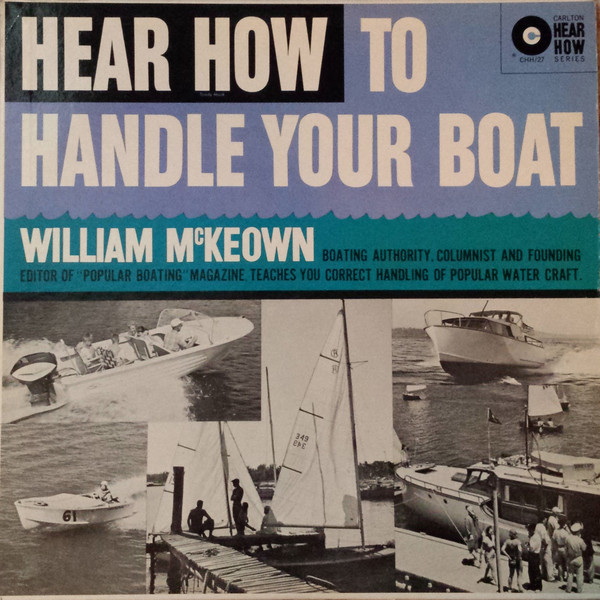
Posted By: Alex - Tue Mar 26, 2024 -
Comments (3)
Category: Boats, 1960s
LaBoata
The LaBoata was created in Spokane, but it's recently been spotted around Phoenix, which is my neck of the woods.More info: auto evolution

Posted By: Alex - Thu May 11, 2023 -
Comments (2)
Category: Boats, Cars
Device for attracting submarines and the like
Submarines were a new menace during World War I, but Louis Schramm figured he had a way to defeat them. His invention (Patent No. 1,143,233) involved powerful electromagnets that would pull submarines to the sides of a ship where they could be electrified, killing their crew.Critics pointed out that the magnets would attract anything metallic to the side of the ship, including mines.

Posted By: Alex - Mon May 08, 2023 -
Comments (3)
Category: Boats, Oceans and Maritime Pursuits, War, Patents, 1910s
Fish Full of Freight
It's the 21st century and we don't have flying cars. Nor do we have atomic-powered submarine freighters towing underwater barges.However, this did remind me of the Russian scheme to use nuclear submarines as oil tankers.

Fortune - Feb 1959
Posted By: Alex - Sat Apr 22, 2023 -
Comments (1)
Category: Boats, Oceans and Maritime Pursuits, Atomic Power and Other Nuclear Matters, Transportation, 1950s, Yesterday’s Tomorrows
S&H Green Stamps Motorboat Redemption
Folks of a certain age recall "trading stamps," tokens with a certain value given out to shoppers when they made a purchase.This site has a nice summary of the phenomenon, with lots of pictures of pages from the redemption catalog.
Here's an ad from 1968 which reveals you could get a Chrysler motorboat with Green Stamps.
Source.
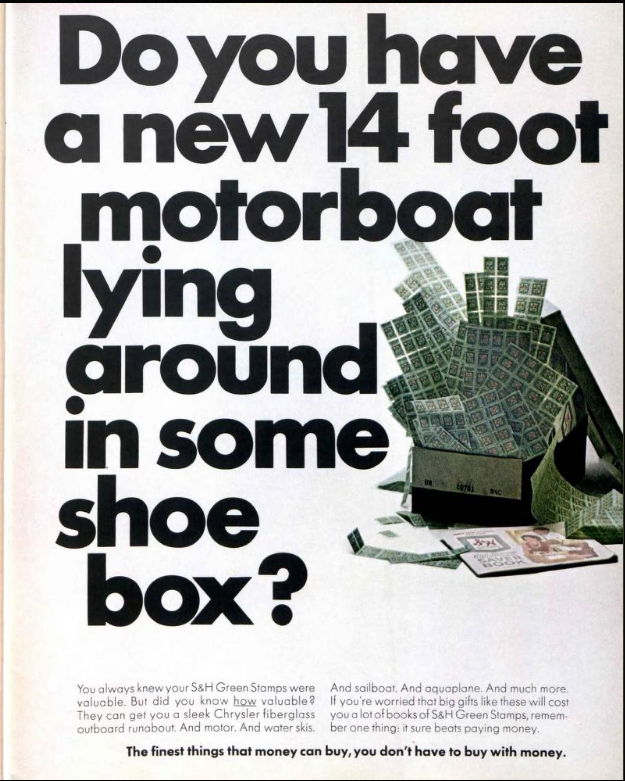
I got curious about how many books of stamps that might take. So I did some very rough calculations, fudging the different years, etc.
This site reveals that a similar boat cost about $1500.00 when new in 1969.
In the catalog at the previous link, an Admiral Color TV demands 150 books.
Here's the likely price in dollars of such an item, as seen below.
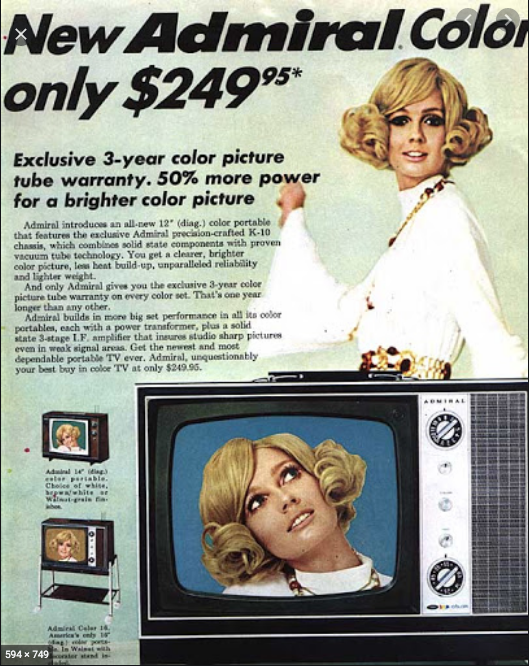
So the boat cost six times a TV, and might, I'm guessing, demand 900 books of stamps. However, I also read that each filled book was worth $1.20, so that would require 1,250 books!
That's a lot of weekly shopping trips to your local IGA, since you got only a handful of stamps with each purchase. I wonder how many people ever took advantage of the offer.
Posted By: Paul - Mon Sep 28, 2020 -
Comments (5)
Category: Boats, Business, Loyalty Programs, Shopper Incentives, Coupons and Other Discounts, Television, 1960s, 1970s
Informative Swimwear
In 2005, Robert Dickey and Ruth Stephens filed a patent application for "swimwear as information device." Their idea was to make a line of swimwear that displayed maritime signal flags. This would allow people to communicate messages to those around them via their swimwear. They explained:The possible messages one could send seemed limitless, but they were never granted a patent. Perhaps the idea of messages on clothing was deemed too obvious.
There's also the limitation that only people conversant with maritime signal flags could decode the messages, which would make the various 'stay away' messages somewhat pointless.
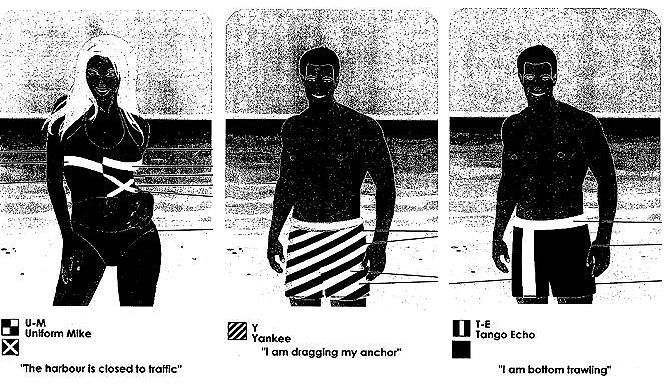
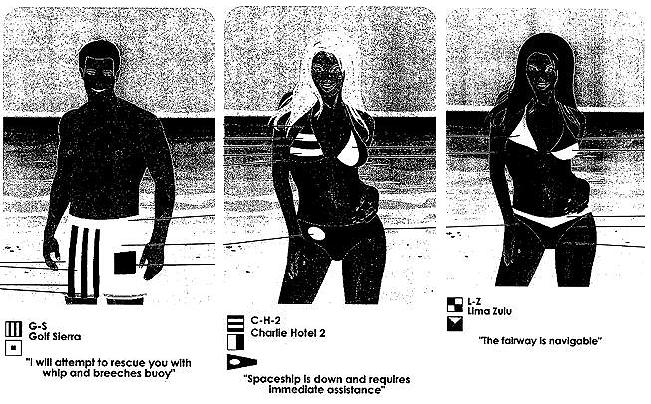
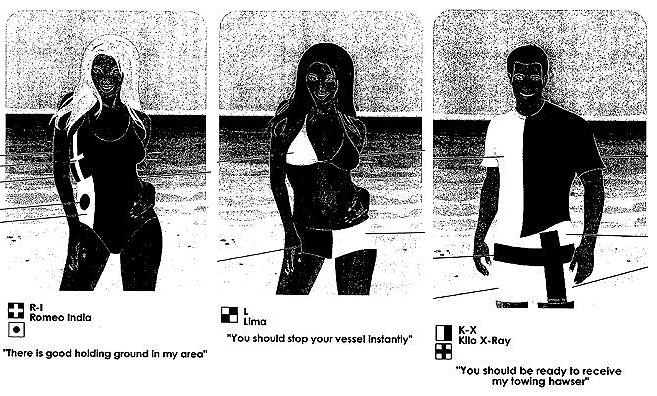
Posted By: Alex - Sun Apr 26, 2020 -
Comments (3)
Category: Boats, Fashion, Inventions, Patents, Languages, Double Entendres and Nudge-Nudge, Wink-Wink
The rookie rower who failed to cross the Atlantic
Even though he had only been on the ocean once, while taking the Newfoundland ferry, Arthur Russell figured he could row across the Atlantic. He practiced for two years on his rowing machine and then set off from Halifax harbor. Six hours later, he had to signal for help and was rescued.
Edmonton Journal - May 31, 1990
Posted By: Alex - Fri Jan 11, 2019 -
Comments (4)
Category: Boats, Oceans and Maritime Pursuits, Sports, 1990s
Life preserver suitcase
Just imagine if everyone on the Titanic had had one of these! (I'm guessing it must have been inspired by that disaster).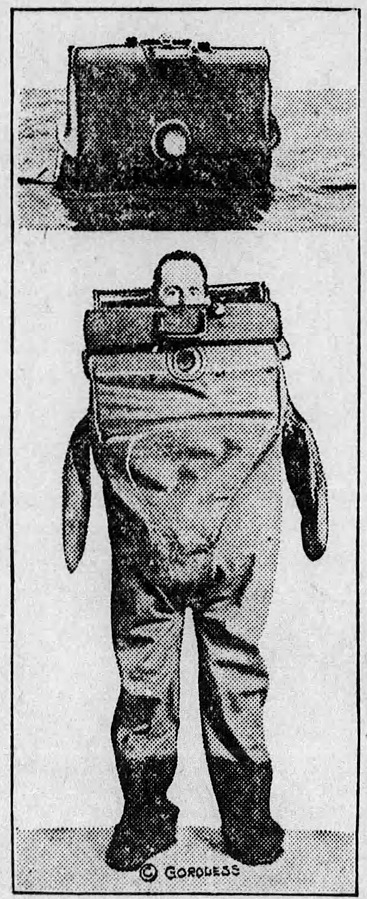
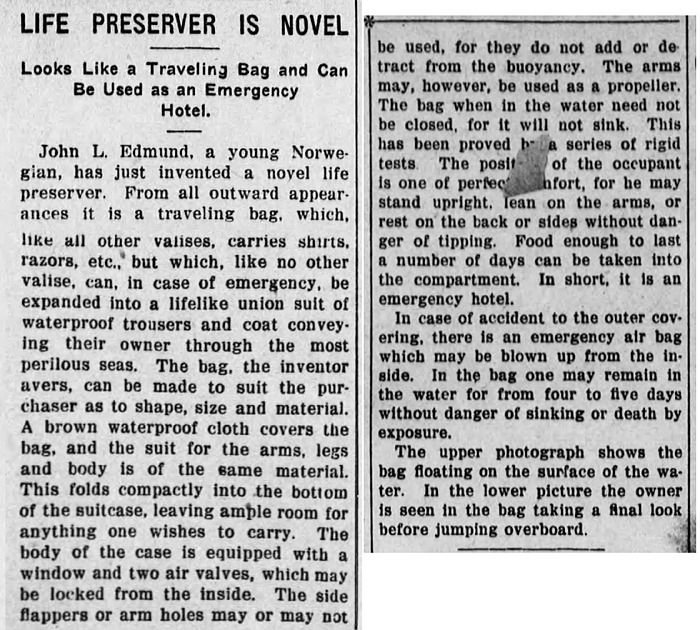
The Kiowa Journal - Oct 7, 1915
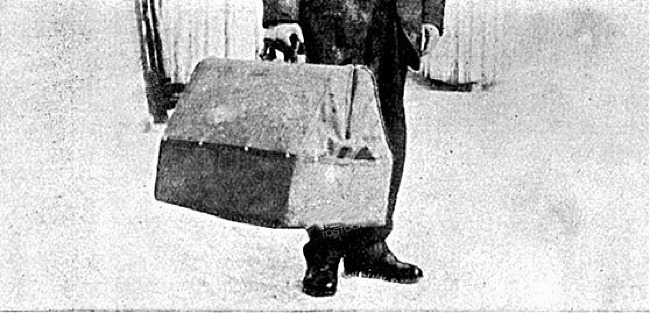
Posted By: Alex - Wed Aug 22, 2018 -
Comments (3)
Category: Boats, Inventions, Travel, 1910s

| Who We Are |
|---|
| Alex Boese Alex is the creator and curator of the Museum of Hoaxes. He's also the author of various weird, non-fiction, science-themed books such as Elephants on Acid and Psychedelic Apes. Paul Di Filippo Paul has been paid to put weird ideas into fictional form for over thirty years, in his career as a noted science fiction writer. He has recently begun blogging on many curious topics with three fellow writers at The Inferior 4+1. Contact Us |




